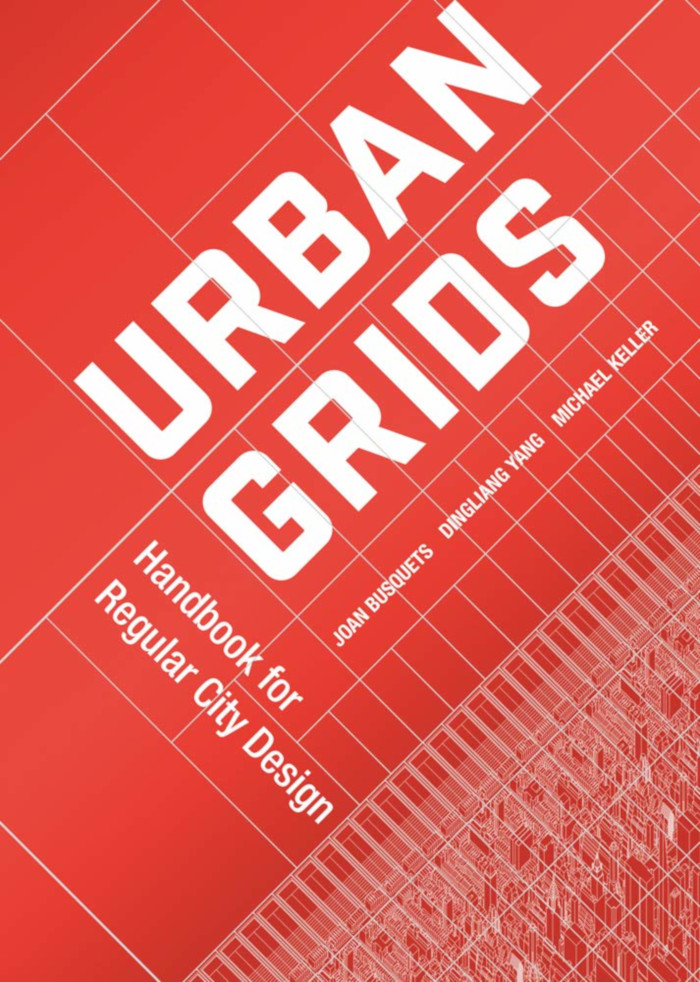Urban Grids
Urban Grids: Handbook for Regular City Design
Joan Busquets, Dingliang Yang, Michael Keller
ORO Editions, March 2019

Hardcover | 8-1/2 x 11 inches | 680 pages | English | ISBN: 978-1940743950 | $60.00
Publisher Description:



Author Bio:
(Note: Books bought via these links send a few cents to this blog, keeping it afloat.)




Joan Busquets, Dingliang Yang, Michael Keller
ORO Editions, March 2019

Hardcover | 8-1/2 x 11 inches | 680 pages | English | ISBN: 978-1940743950 | $60.00
Publisher Description:
Urban Grid: Open Form for City Design is the result of a five-year design research project undertaken by professor Joan Busquets and Dingliang Yang at the Harvard Graduate School of Design. The research that is the foundation for this publication emphasizes the value of open forms for city design, a publication that specifically insists that the grid has the unique capacity to absorb and channel urban transformation flexibly and productively. Urban Grid analyzes cities and urban projects that utilize the grid as the main structural device for allowing rational development, and goes further to propose speculative design projects capable of suggesting new urban paradigms drawn from the grid as a design tool. Consisting of six major parts, it is divided into the following topics: 1) the atlas of grid cities, 2) grid projects through history, 3) the 20th-century dilemma, 4) the atlas of contemporary grid projects, 5) projective tools for the future, and 6) good-grid city as an open form coping with new urban issues.dDAB Commentary:
Like the cities it studies, this book is massive. With nearly 700 pages and a generous A4 page size, Urban Grids is a substantial book that is loaded with thousands of illustrations that examine the past, present, and future of cities organized by grids. It is the outcome of eight years of research conducted at Harvard GSD, though the book is not alone; it follows four smaller books on four "paradigmatic" gridded cities: Barcelona, Chicago, Hangzhou, and Manhattan. The six chapters of Urban Grids, listed in the publisher description above, consist of three historical chapters, two on the present, and a brief one on the future. So the book starts with an atlas of gridded cities — 101 of them, from Abu Dhabi to Zhengzhou — moves on to grid projects across history and then contemporary grid projects, and ends by looking forward to guidelines for future city design. International in scope, and carefully and consistently presented in drawings and diagrams, Urban Grids is an impressive documentation of a finely honed, long-term research project.Spreads:
Yet to what end is the research assembled in this book? The back cover touts the research as "revealing new emerging conditions for the urban grid," though the bulk of the book is historical (the first three chapters make up 500 of the book's 680 pages). So Urban Grids could be seen as an argument for the validity of the grid; though given the pervasiveness of urban grids, I doubt its validity was ever seriously in doubt. Nevertheless, the 101-page atlas at the start of the book uses a consistent format that allows readers to compare Copenhagen, for instance, with Kansas City or Ouagadougou or any of the other cities. The second chapter delves into the ends for which grids have been used throughout history, while the third chapter touches upon real and imagined projects that respectively abandoned and reimagined urban grids.
Which brings us to chapter four, what I find most interesting. Here are 48 contemporary projects, presented again with a consistent format for easy comparison. Instead of cities, the projects range in scale from the two-block Riverside Center in Manhattan to the 26-square-mile Lingang New City in China. Be they residential, commercial, or mixed-use, they all say to me that the grid is what works best for creating parcels for smaller developments within the larger whole. In other words, money is guiding grids, not architects. Yet Joan Busquets and his collaborators see the potential for architects and urban designers to create places of value through the freedom embodied in grids. Those willing to digest this meaty book might just end up agreeing with him.



Author Bio:
Joan Busquets, world-renowned urban planner and architect, is the first Martin Bucksbaum Professor in Practice of Urban Planning and Design at the Harvard Graduate School of Design. Dingliang Yang is an instructor in Urban Planning and Design at the Harvard University Graduate School of Design. He is an architect, urban designer, and the founding partner of VARY Design. Michael Keller is a landscape and architectural designer and a recent graduate from the Harvard University Graduate School of Design.Purchase Links:
(Note: Books bought via these links send a few cents to this blog, keeping it afloat.)



